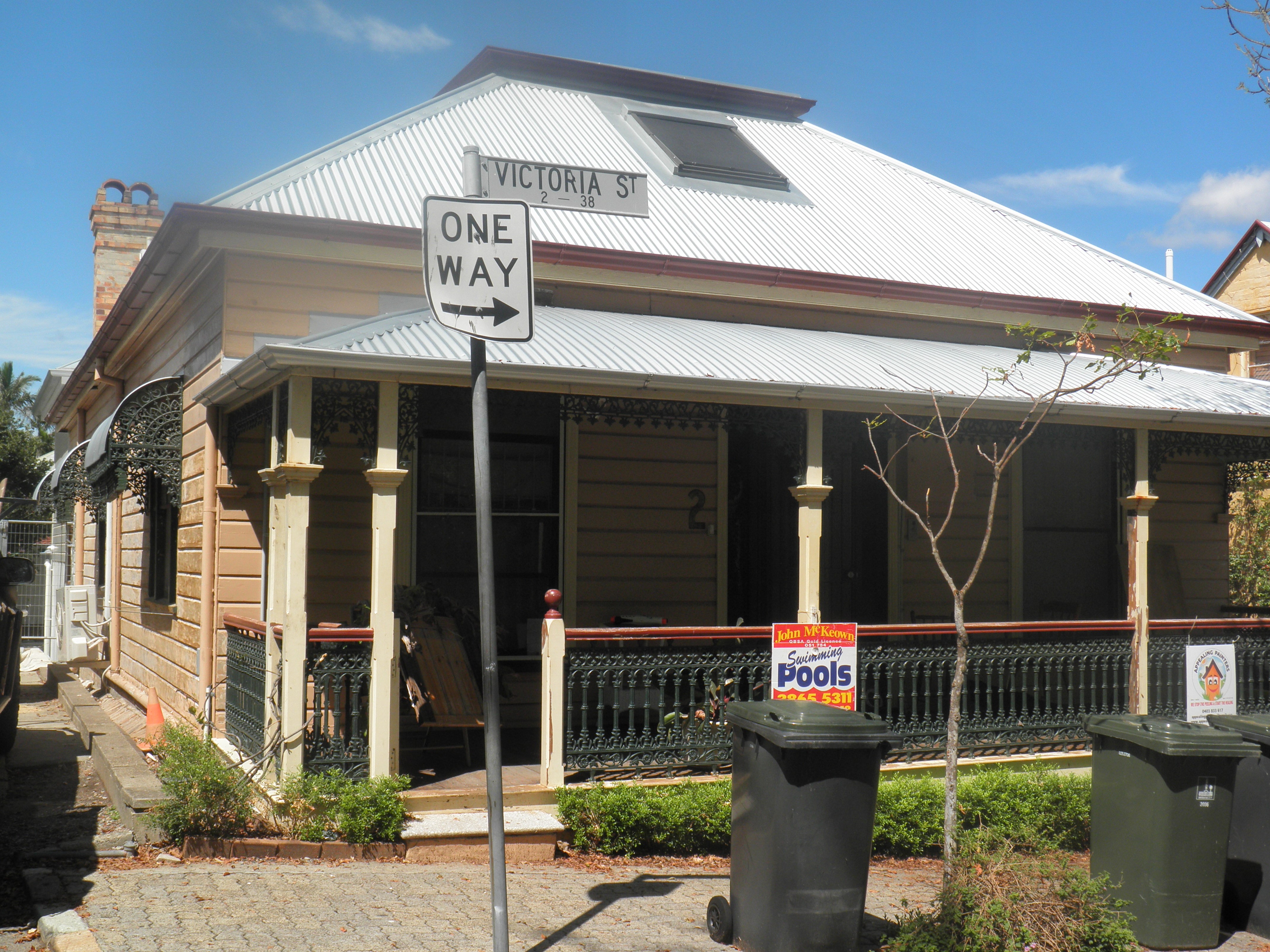Addresses
Type of place
House
Period
Colonial 1842-1860
Style
Filigree
Addresses
Type of place
House
Period
Colonial 1842-1860
Style
Filigree
This timber house, on the slopes of Rogers Street, was built between 1865 and 1872 for Thomas and Annie Spilsbury. Thomas Spilsbury was a compositor from Worcestershire, England, who immigrated to New South Wales in 1858 before moving to Brisbane. The house demonstrates the pattern of development in Spring Hill in the 1860s when the area was growing as Brisbane’s first dormitory suburb. The slopes below the ridges of St Paul’s Terrace, Wickham Terrace and Gregory Terrace were home to middle class residents such as grocers, clerks and skilled tradesmen.
Lot plan
L25_RP10513
Key dates
Local Heritage Place Since —
Date of Citation —
Construction
Roof: Corrugated iron;Walls: Timber
Criterion for listing
(A) Historical; (E) AestheticInteractive mapping
Lot plan
L25_RP10513
Key dates
Local Heritage Place Since —
Date of Citation —
Construction
Roof: Corrugated iron;Walls: Timber
Criterion for listing
(A) Historical; (E) AestheticInteractive mapping
History
This timber cottage, situated where Rogers Street joins Victoria Street just below St Paul’s Terrace, was built between 1865 and 1872 for Thomas Spilsbury, a compositor, and his second wife, Annie Elizabeth Spilsbury.
Thomas Spilsbury, the son of a carpenter from Birmingham, arrived in New South Wales in 1858. The following year, he married Kate Reed and they soon moved to Brisbane. Kate Reed died in 1862 and Spilsbury remarried soon after. The Spilsburys purchased the twenty perch allotment in 1865 in Rogers Street in Annie Spilsbury’s name. They were residing in Rogers Street by 1872.
During the 1860s, Spring Hill developed as the first dormitory suburb of the growing township of Brisbane. The settlement pattern at Spring Hill in the mid-nineteenth century echoed that of other early Brisbane suburbs such as South Brisbane, Red Hill and Paddington. Those with the means to own the highest land with cooling breezes and expansive views built residences along the ridges, while the middle classes of shopkeepers and artisans lived on the slopes of Spring Hill. Unskilled workers such as labourers occupied the lowest, flood prone areas of the valleys or “hollows”, often in rented accommodation. In the 1870s, the residents on the upper slopes of Rogers and Victoria Streets included clerks, a postal worker (William Moody who built a brick duplex and adjacent cottage in the street), and a tailor.
In 1875, the Spilsburys’ home was purchased in the name of Annabella Gilmore, the wife of Adam Gilmore, a grocer. The Gilmores resided in the street for several years, mortgaging the property several times until Gilmore was declared bankrupt in 1884 and the house was sold.
A 1913 plan of the property shows the house (then No. 2 Victoria St), occupying less than half of the 20 perch allotment. The back yard contained several outbuildings including a ‘fernery’ behind the house and a large timber and brick structure along the rear boundary containing a ‘fowlhouse’, bathroom, laundry and toilet. An extension was added to the back of the house prior to 1946. The outbuilding along the rear boundary was demolished after 1946.
During the 1960s, the house operated as a chiropractic clinic. Later changes to the house include further alterations to the rear and the addition of a swimming pool.
Description
Spilsburys’ Cottage is a modest one-storey, timber framed low set timber house with attached rear service wing fronting Rogers Street, Spring Hill. It has a hipped roof clad with corrugated metal sheets with a flat pan at the apex. A timber framed verandah with convex roof spans the front with decorative elements. The cottage retains original large sash windows and face brick chimney.
Statement of significance
Relevant assessment criteria
This is a place of local heritage significance and meets one or more of the local heritage criteria under the Heritage planning scheme policy of the Brisbane City Plan 2014. It is significant because:
References
-
Brisbane City Council. Building Cards and Surveyor’s Field Books
-
Brisbane City Council Detail Plan no. 146, 1914
-
Queensland Certificates of Title and Application for Torrens Title documents No. 3323
-
Queensland Post Office Directories
-
Digitised newspapers and other records. http://trove.nla.gov.au/newspaper
-
NSW Assisted Immigrant Passenger Lists 1828-1896. Ancestry.com website. http://www.ancestrylibrary.com/ Viewed 6 Dec 2014
-
Queensland Intestacies, Insolvencies & Wills 1859-1900 Transcription. http://www.findmypast.com.au/ . Viewed 4 Dec 2014
Citation prepared by — Brisbane City Council (page revised September 2020)

